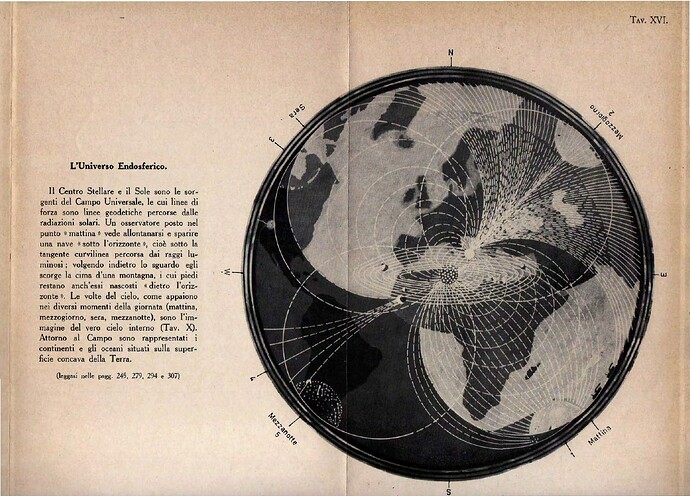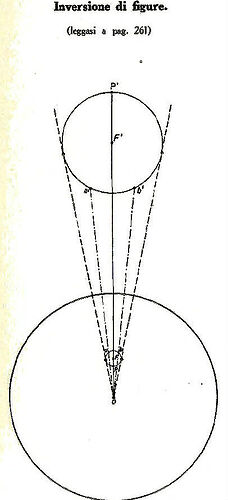The Supreme Harmony of the Universe: The Endospherical Field Theory by Paolo Emilio Amico-Roxas
Download the Book
Overview
The Supreme Harmony of the Universe: The Endospherical Field Theory is a groundbreaking exploration into a novel cosmological model. Written by Paolo Emilio Amico-Roxas, the book introduces the concept of an endospherical universe where Earth is envisioned as a hollow sphere, and humanity resides on the inner surface of this sphere. Within this framework, celestial bodies, energy, and light exist and move inside the sphere rather than in the infinite expanse of traditional space.
This work synthesizes insights from geometry, electromagnetic theory, and ancient philosophical traditions to offer a radically different explanation of the cosmos. Originally published in 1990, it challenges the foundations of conventional science and seeks to unify physics, metaphysics, and cosmology in an elegant new model.
Structure and Content
1. Preface
The preface sets the tone for the book by challenging readers to step outside the boundaries of mainstream cosmology. Roxas introduces the idea of geometric inversion, where the relationships between concave and convex geometries become the key to understanding the universe. He traces inspiration from ancient mythologies and cosmological models, emphasizing the need for a paradigm shift in our understanding of the cosmos.
2. Endospherical Field Theory
At the core of the book lies the concept of the endospherical field. Roxas proposes that all phenomena within the universe—from light to gravity—are governed by a unified field dynamic. The Earth’s interior shell acts as a boundary, while the universe’s energy flows within this enclosed space. Key points include:
- The redefinition of light as bending upward, creating optical illusions of convexity.
- Gravity as a result of longitudinal pressures rather than mass-based attraction.
- The celestial sphere as the central organizing structure within the endospherical model.
3. Geometric Inversion and the Nature of Light
Roxas provides an extensive discussion on geometric inversion. Using principles of reciprocal radii, he explains how convex geometries can be mathematically transformed into concave structures. He argues that this framework aligns better with observed phenomena such as:
- The curvature of light paths.
- The illusion of an infinite sky.
- The behavior of distant stars and celestial objects.
4. Energy Conservation in a Closed System
One of the significant claims in the book is that the endospherical model resolves inconsistencies in the conservation of energy. Roxas suggests that energy within the sphere is self-contained, circulating in a closed loop from the celestial sphere back to the Sun and stars. This eliminates the paradoxes associated with energy dissipation in infinite space.
5. A Critique of Conventional Cosmology
Roxas critiques the assumptions underpinning mainstream science, including:
- The concept of a light-year and its reliance on linear Euclidean geometry.
- The interpretation of gravity as a force acting over infinite distances.
- The limitations of space-time curvature models in explaining universal phenomena.
6. Philosophical and Metaphysical Dimensions
In this section, Roxas explores the philosophical implications of the endospherical model. Drawing on Neoplatonic and ancient cosmological ideas, he argues for a unified, living cosmos. He contrasts this with the existential void of conventional cosmology, emphasizing harmony, purpose, and the interconnectedness of all things.
Key Themes and Insights
- Geometric Transformation: The book’s mathematical foundation lies in the inversion of convex and concave geometries, offering a new way to conceptualize space and motion.
- Unified Field Theory: Roxas correlates electromagnetic phenomena with the behavior of light and gravity in an endospherical model.
- Energy Circulation: The closed-loop energy system within the sphere addresses long-standing questions about energy conservation.
- Optical Illusions: The bending of light upward is presented as the mechanism behind many perceived cosmological phenomena.
- Ancient Wisdom: The alignment of endospherical ideas with ancient cosmologies underscores their timeless relevance.
Chapter Summaries
Chapter 1: Geometric Foundations
This chapter introduces geometric inversion, explaining how concave and convex structures relate mathematically. Roxas argues that this principle is crucial for understanding the endospherical model, as it redefines the spatial relationships we observe and aligns them with ancient and modern observations of celestial motion.
Chapter 2: Light and Optics
The behavior of light is reexamined, focusing on its refraction and bending within a concave geometry. Roxas shows how upward-bending light creates the illusion of a convex horizon and distant stars, challenging conventional explanations of optical phenomena.
Chapter 3: Gravity and Field Dynamics
Gravity is redefined as a longitudinal pressure system acting within the endospherical structure. Roxas integrates this concept into a broader field theory, showing how it aligns with observed physical forces while addressing gaps in traditional gravitational models.
Chapter 4: Energy and the Cosmos
Energy conservation is explored within the closed spherical system of the endospherical model. Roxas describes how energy flows cyclically, eliminating the paradoxes of energy loss in infinite space and offering a self-contained cosmological framework.
Chapter 5: Revisiting Ancient Cosmologies
Roxas draws parallels between the endospherical model and ancient cosmological systems, such as Egyptian, Neoplatonic, and Vedic traditions. He argues that these systems intuitively grasped the principles of a living, interconnected universe.
Chapter 6: Philosophical Implications
The final chapter reflects on the spiritual and metaphysical dimensions of the endospherical model. Roxas emphasizes harmony and interconnectedness, proposing that this framework restores purpose and coherence to our understanding of the universe.
Conclusion
The Supreme Harmony of the Universe challenges readers to rethink everything they know about the cosmos. By uniting physics, geometry, and philosophy, Roxas provides a compelling alternative to conventional models, encouraging exploration and open-minded inquiry. This book is a must-read for anyone seeking to understand the universe from a radically different perspective.
Images from the book
Paolo Emilio Amico-Roxas Endospherical Field Theory Diagrams Translated
http://joedubs.com/wp-content/uploads/2024/09/Paolo-Emilio-Amico-Roxas-Endospherical-Field-Theory-Diagrams-Translated.pdf
























